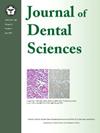Marginal bone level of dental implants using computer-aided design/computer-aided manufacturing customized abutment and prefabricated abutment–A five-year follow-up
IF 3.4
3区 医学
Q1 DENTISTRY, ORAL SURGERY & MEDICINE
引用次数: 0
Abstract
Background/purpose
Computer-aided design/computer-aided manufacturing (CAD/CAM) allows for the customization of implant abutments as an alternative to prefabricated options. The purpose of this study was to compare the marginal bone levels of dental implants using CAD/CAM customized abutments (CA) versus prefabricated abutments (PA) over a five-year follow-up period.
Materials and methods
Implants were divided into two groups based on abutment type: CA and PA. Marginal bone level (MBL), changes in MBL and bone-to-implant contact ratio (BIC), were assessed from baseline to 5 years post-prosthetics loading. Additionally, the study analyzed based on dental arches, opposing structure types, and the distance from implant platform to the cementoenamel junction of adjacent teeth (CEJ-PL).
Results
Overall, MBL increased significantly for all implants from baseline to 5 years. The CA group in the mandible showed significantly higher MBL compared to the PA group (0.98 ± 0.71 mm vs. 0.54 ± 0.55 mm). Implants opposed by fixed restorations (FRs) experienced significantly more MBL compared to those opposed by natural teeth (NT) after 5 years. Implants placed at a depth greater than 3 mm (CEJ-PL > 3 mm) exhibited significantly greater changes in MBL on the distal side after 5 years compared to those placed at a shallower depth (CEJ-PL ≤ 3 mm).
Conclusion
The MBL and changes in MBL showed similar trend between the CA and PA groups in the five-year follow-up. The CA group exhibited significantly more bone remodeling after one year, particularly for implants opposing FRs and those with a CEJ-PL distance exceeding 3 mm.
使用计算机辅助设计/计算机辅助制造定制基台和预制基台的种植体边缘骨水平- 5年随访
背景/目的计算机辅助设计/计算机辅助制造(CAD/CAM)允许定制种植基台作为预制选项的替代方案。本研究的目的是比较使用CAD/CAM定制基台(CA)和预制基台(PA)的牙种植体的边缘骨水平,随访5年。材料与方法simplants根据基牙类型分为CA和PA两组。从基线到假体加载后5年,评估边缘骨水平(MBL), MBL和骨与种植体接触比(BIC)的变化。此外,本研究还根据牙弓、相对结构类型、种植体平台到邻牙牙釉质交界处的距离(CEJ-PL)进行了分析。结果总体而言,从基线到5年,所有种植体的MBL均显著增加。CA组下颌骨MBL明显高于PA组(0.98±0.71 mm比0.54±0.55 mm)。5年后,固定修复体(FRs)的种植体比自然牙(NT)的种植体经历了更多的MBL。植入物放置深度大于3mm (CEJ-PL >;5年后,与放置在较浅深度(CEJ-PL≤3 mm)的患者相比,远端MBL的变化明显更大。结论CA组与PA组5年随访期间MBL及MBL变化趋势相似。CA组在一年后表现出明显更多的骨重塑,特别是对FRs和CEJ-PL距离超过3mm的种植体。
本文章由计算机程序翻译,如有差异,请以英文原文为准。
求助全文
约1分钟内获得全文
求助全文
来源期刊

Journal of Dental Sciences
医学-牙科与口腔外科
CiteScore
5.10
自引率
14.30%
发文量
348
审稿时长
6 days
期刊介绍:
he Journal of Dental Sciences (JDS), published quarterly, is the official and open access publication of the Association for Dental Sciences of the Republic of China (ADS-ROC). The precedent journal of the JDS is the Chinese Dental Journal (CDJ) which had already been covered by MEDLINE in 1988. As the CDJ continued to prove its importance in the region, the ADS-ROC decided to move to the international community by publishing an English journal. Hence, the birth of the JDS in 2006. The JDS is indexed in the SCI Expanded since 2008. It is also indexed in Scopus, and EMCare, ScienceDirect, SIIC Data Bases.
The topics covered by the JDS include all fields of basic and clinical dentistry. Some manuscripts focusing on the study of certain endemic diseases such as dental caries and periodontal diseases in particular regions of any country as well as oral pre-cancers, oral cancers, and oral submucous fibrosis related to betel nut chewing habit are also considered for publication. Besides, the JDS also publishes articles about the efficacy of a new treatment modality on oral verrucous hyperplasia or early oral squamous cell carcinoma.
 求助内容:
求助内容: 应助结果提醒方式:
应助结果提醒方式:


